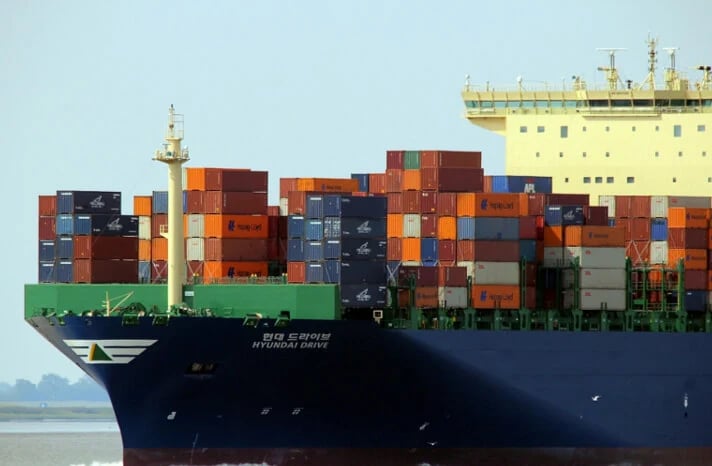3 Factors That Affect the Structural Integrity of Shipping Containers
 Marissa Morin | May 12, 2021
Marissa Morin | May 12, 2021

Modified shipping containers are inherently durable, but it’s still important to consider what factors may affect any container-based building’s structural integrity. Whether too many trips at sea (prior to modifications), too many alterations, or improperly stacking units – you should take these factors into consideration when modifying shipping containers to ensure your structure is safe. Here are three factors that affect the structural integrity of containers:
1.) Many trips at sea

Some shipping containers are referred to as “used containers,” meaning they have traveled at sea more than once. Other containers are considered “one-trip,” of course meaning they’ve only traveled once across the ocean. When modifying used containers into structures, it’s important that the current state of the container is up to par, so the structural integrity remains sound.
Keep in mind that the most frequently traveled used containers may have dents and distortions. The significance of the distortions might lead expert manufacturers to dismiss these units from modification to find less damaged containers.
To determine if a container is safe enough to receive modifications, make sure the container is not tilting and instead remains rectangular – as originally designed. Then, inspect for significant dents or large rust patches. Even though containers are impressively durable, severe dents and uncontrolled rust are both signs that a container is not ideal for modification.
2.) Altering the container too much

Although modifications are a part of the process to transform a shipping container into a container-based structure, too many alterations will impact the structural integrity. There are two ways you can cut into a container that might harm the unit.
Corner Castings
The weight of each shipping container is carried through the corner castings – the four corners of the container. If you were to cut out a corner casting to achieve a modification design, you’ll sacrifice structural integrity. That’s why it’s important for engineers and architects to understand the way containers work structurally. It’s best to design according to the container and its elements versus force the container to configure into something it’s not – that way you get the most benefit from the container, maximizing its strength.
Container Walls
While it’s common to cut into shipping container walls to add doors, windows, and wall-mounted air conditioning units, some cuts may be too big, negatively impacting the structural integrity. For example, cutting out an entire wall of a container will cause the roof to sag, and the floor will become spring-like with a lot of give. Even though most of the container load is carried through the corner castings, the walls still carry some weight and hold the shape of the container – making them very important to the structural integrity. If you decide to make drastic cuts to your shipping container, consider what is required to reinforce the unit properly – without relying on the container’s integrity.
3.) Stacking containers improperly

Stacking modified containers creates larger structures that work great as offices and other facilities but stacking the containers improperly can pose serious safety concerns. To properly stack a shipping container, set-up crews should use the right equipment – a crane or an industrial sized forklift – to maneuver the units into position. Then, the crews should fasten the stacked units together by the corners to combine them into a single structure. Stacking the units at the corners – versus stacking at a diagonal – provides the most structural support. In fact, diagonally stacked containers are often unsafe, unless additional support is constructed. Once stacked, we use twist locks as the mechanisms to secure the corners of containers together, creating structurally safe, multi-unit buildings.
Modified Shipping Container Structures
To learn more about the many benefits of shipping containers, visit our resources page to learn how to get the most out of your shipping container structure. Feel free to reach out to our container experts here at Falcon by calling 512-231-1010 or email us at Sales@FalconStructures.com.
SUBSCRIBE
- Shipping Container Modifications
- How-Tos
- Workspace
- Commercial Construction
- Multi-Container Buildings
- Storage Solutions
- Industrial Enclosures
- Bathrooms & Locker Rooms
- Oil & Gas
- Climate Control
- Green Building
- Living Space
- Industry Insight
- Military & Training Facilities
- Water Treatment Solutions
- Energy
THINK INSIDE THE BOX®
WITH OUR BLOG
Get everything from shipping container basics, to detailed how-tos and industry news in our weekly blog. Stay inspired and subscribe!
RELATED BLOGS

Stacking Shipping Containers Safely: What You Need to Know
Marissa Morin | Jul 26, 2023 | 3 min read
READ MORE

20 Things We Love About Falcon: 20th Anniversary Edition
Marissa Morin | Feb 8, 2023 | 5 min read
READ MORE

Why is Structural Framing Important for a Modified Shipping Container?
Marissa Morin | Apr 12, 2023 | 3 min read
READ MORE
